Last Updated on April 21, 2025 by Hannah Stephenson
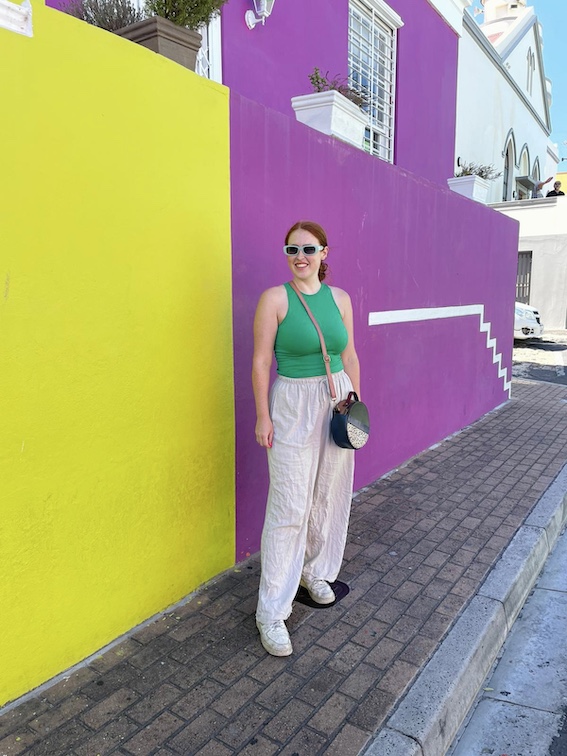
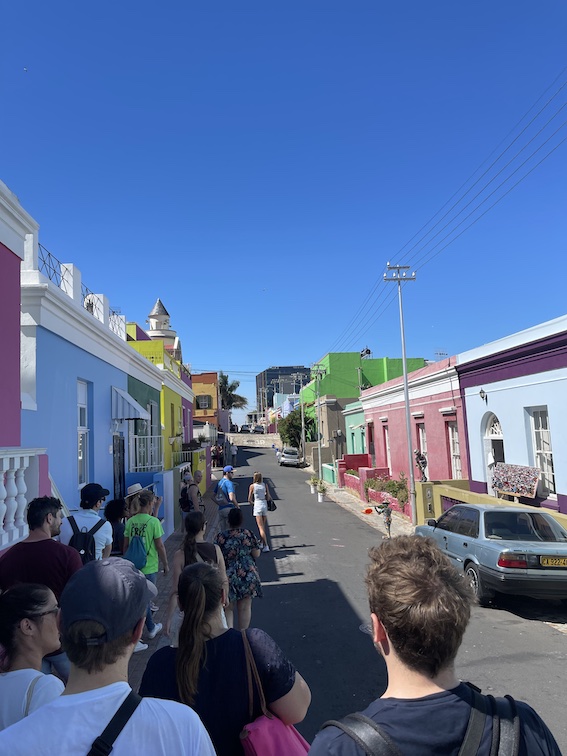
If you’ve ever googled Cape Town, the chances are that you’ve seen photos of Bo Kaap’s brightly-coloured cottages. So if you’re thinking about checking out the area, then I don’t blame you!
As well as being aesthetically pleasing, Bo Kaap is actually Cape Town’s oldest surviving neighbourhood and is steeped in tradition and culture. Visiting this Cape Malay enclave actually taught me a lot about the history of Cape Town as a whole.
I have lived in Cape Town for a few years now, and I love exploring this area. In fact, I always bring friends who come to visit, as I consider checking out Bo Kaap a real must-do! Now, I’m going to share all of my tips for visiting with you.
Quick note: this is a complete guide to Bo Kaap, so I’ve included an overview of its history and culture. However, you can click here to jump to the best things to do in Bo Kaap.
Where is Bo Kaap?
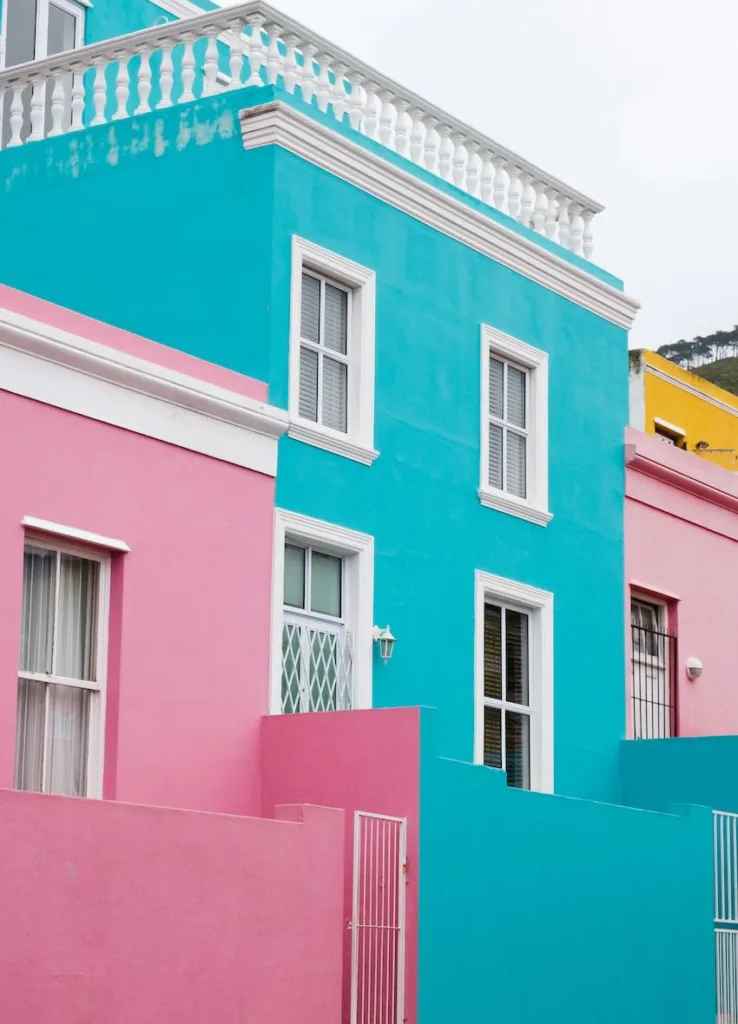
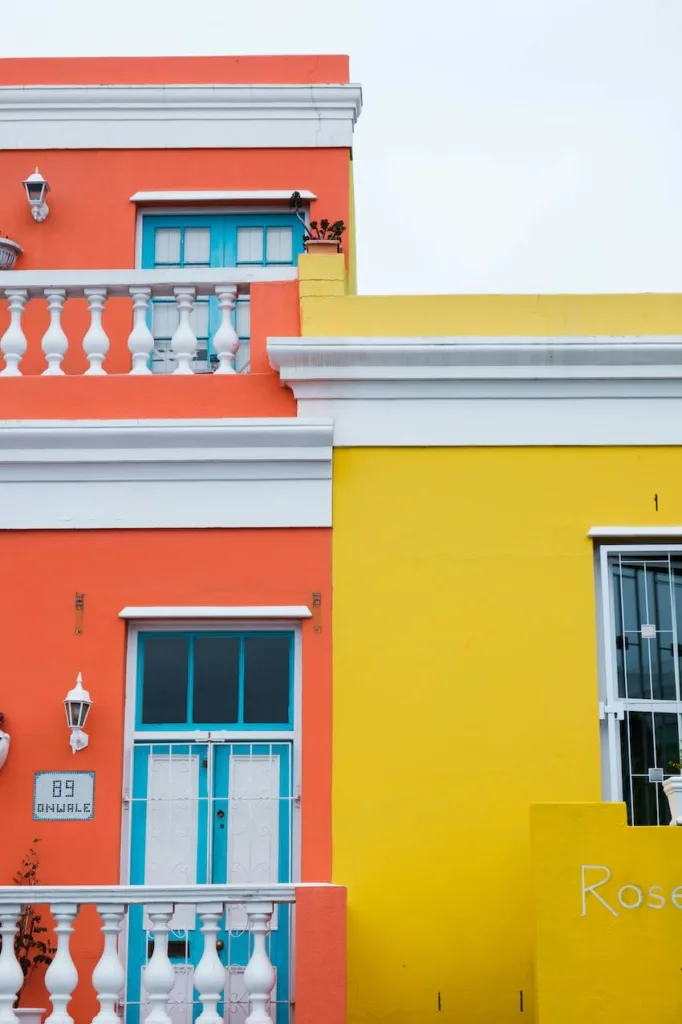
Bo Kaap is smack dab in the middle of Cape Town. It’s on the slopes of Signal Hill, right near the city centre, so it’s super easy to get to. In my experience, it only takes 15 minutes (maximum!) to get there from any of the city’s central neighbourhoods.
History of Bo Kaap
Where to begin?
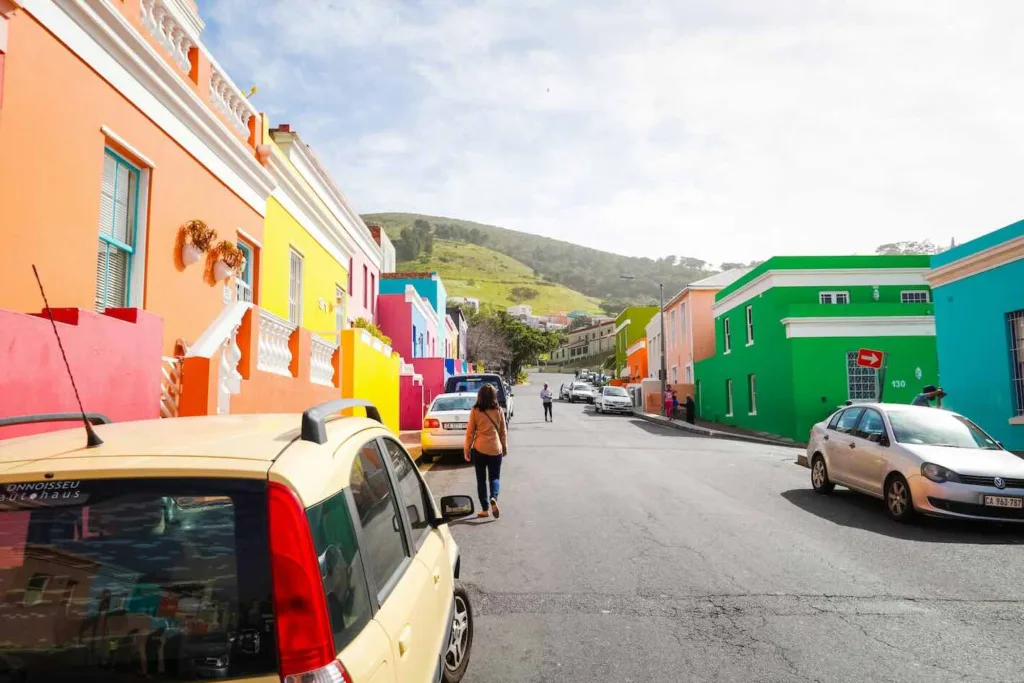
Bo Kaap started out in 1760 when Dutch colonist Jan de Waal built some small houses in the area which he leased out to slaves.
These slaves were mostly Muslims from the Dutch East Indies. These included Malaysia and so they became known as “Cape Malay” people – term that is still used today.
The area began to grow, especially after the abolition of slavery in 1834. Although slavery had officially ended, people here were still poor and unable to move elsewhere.
Thus, Bo Kaap became even more established and over time it was cemented as a quintessential part of Cape Town.
To this day, Bo Kaap remains a very working-class area, although it is now experiencing some gentrification.
Apartheid
When I took a tour of Bo Kaap, my guide told me that the area still exists because residents were allowed to remain here during apartheid.
This was unusual because people in other areas, like District Six, were displaced and forced into informal settlements under the Group Areas Act. This act was introduced 1950 and forbade different racial and religious groups from co-existing.
However, since Bo Kaap had always been a Muslim enclave, it was designated a Muslim-only area. This meant that most Cape Malay people were able to remain.
The Colourful Houses
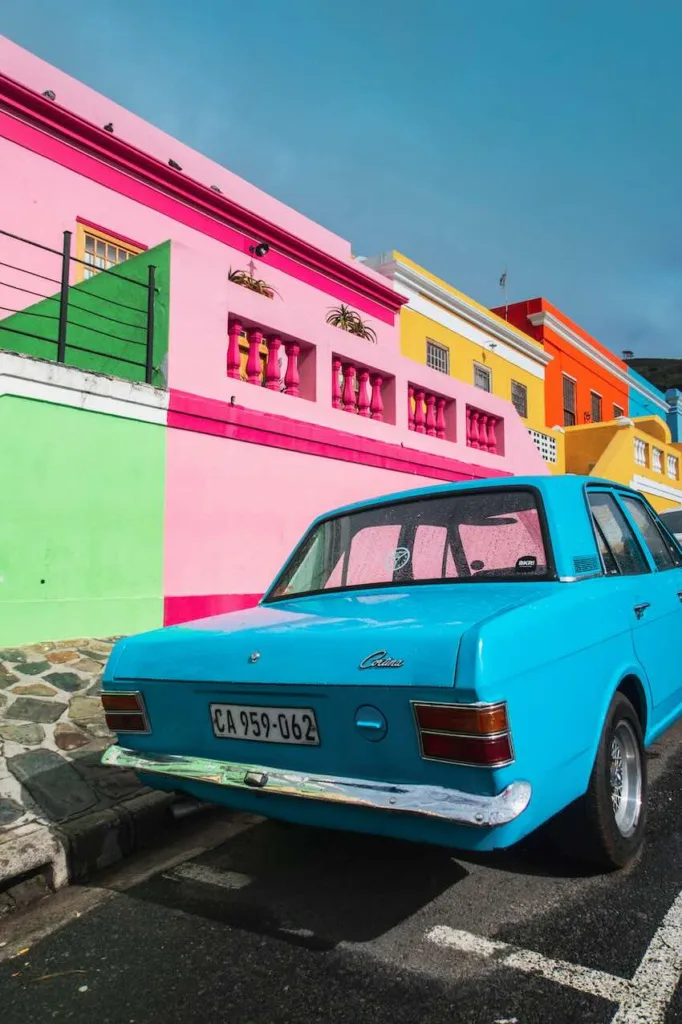

I’m just going to come right out and say it:
Nobody REALLY knows why the houses in Bo Kaap were originally painted.
Some people say it was to celebrate the end of slavery. Others say that it was to celebrate Eid in the 1950s. Another story is that it was to help different businesses distinguish themselves from one another.
Everyone believes something different, but there’s no definitive answer.
What I do know for sure is that nowadays, the City of Cape Town funds these colourful façades. The paint fades and peels fast in the sun, so the tourism board pays homeowners to ensure that Bo Kaap stays bright.
What to See and Do in Bo Kaap
Check out the colourful houses
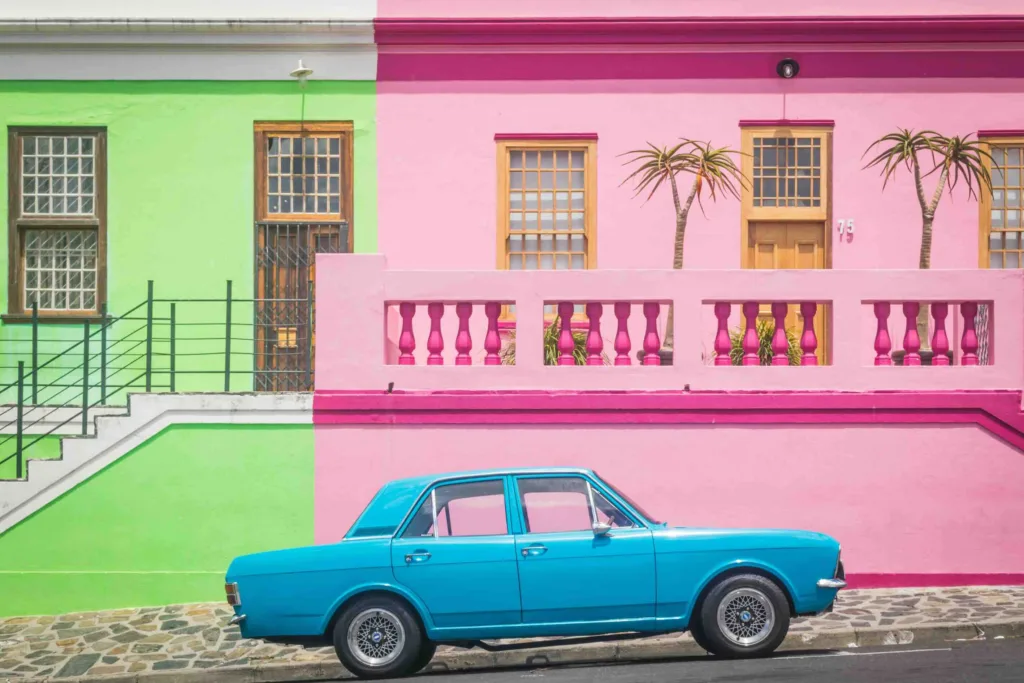
Bo Kaap’s brightly coloured houses are so eye-catching! Probably the most iconic one is the pink house that usually has a vintage blue car parked out front. It’s hard to miss as it’s right where two of Bo Kaap’s main streets (Rose and Wale) intersect, but you can get the exact location here.
However, please do remember that Bo Kaap was not created for Instagram. These brightly coloured cottages are people’s homes and businesses, so be respectful.
Try not to block doorways, give residents their personal space, and dress modestly.
If you want to get great photos, then I’m a fan of this photoshoot tour of Bo Kaap! It’s run by three talented South African photographers who know all the best spots to snap photos without disturbing anyone.
Faeza’s Home Kitchen
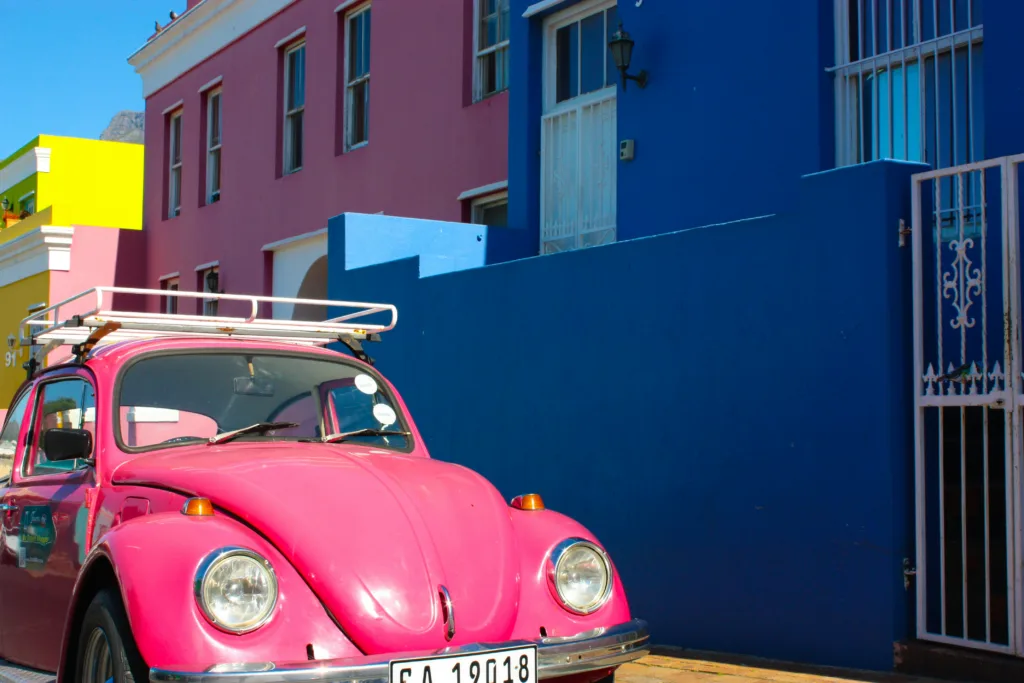
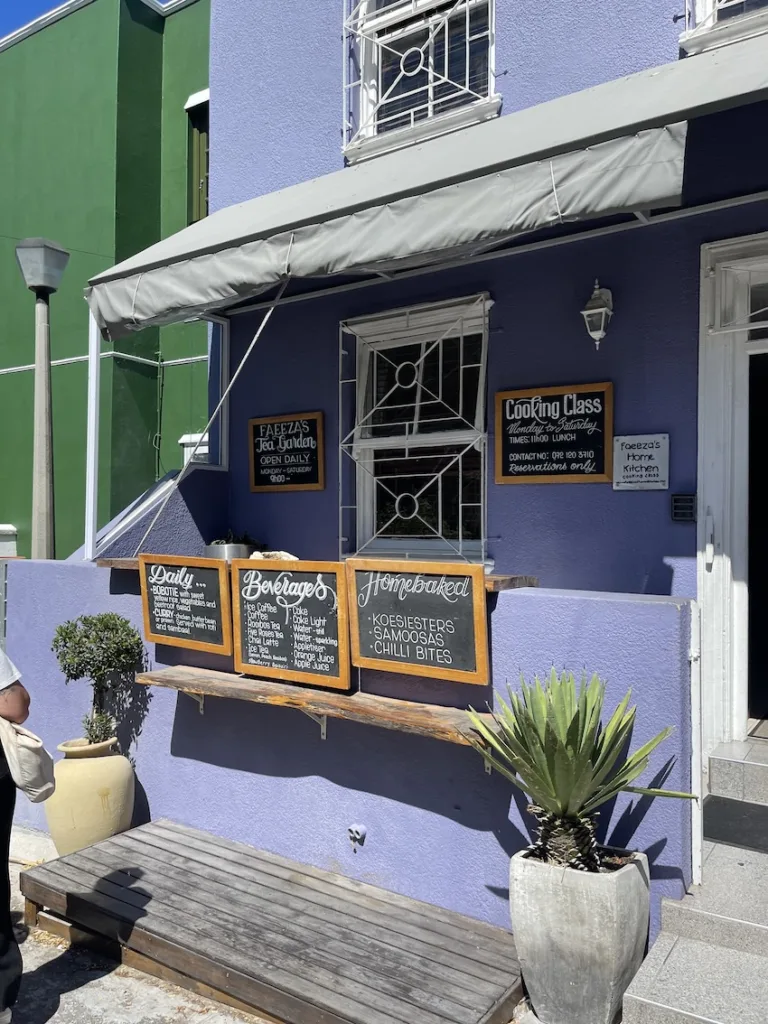
Cape Malay cuisine is absolutely delicious, and I recommend eating some while you’re in the area!
When I took a tour of Bo Kaap, my guide recommended checking out Faeza’s Home Kitchen afterwards. My friend, Liam, and I shared their 3-course special. We got a roti, a delicious curry, and some koeksisters.
You can also take a cooking class at Faeza’s to really immerse yourself in Cape Malay culture. I haven’t done this myself, but I know it’s a really popular tourist activity and I’ve heard that it’s a great experienceIt costs R700 per person and lasts for about 4.5 hours.
Check out the art galleries
There are a couple of small, independent art galleries around Bo Kaap. Liam and I checked a few of them out after our tour ended, and they had some interesting pieces.
I’ll be honest, I’m not a huge art lover, but I still thought the galleries were worth seeing!
Visit the Bo Kaap Museum
The Bo Kaap Museum is housed in one of the area’s oldest cottages, and tells the story of the neighbourhood and the plight of the Cape Malay people under colonialism and apartheid.
It’s only R60 for international visitors (and R40 for South Africans) so it’s definitely worth checking out while you’re in the neighbourhood.
Grab lunch at Bo Kaap Deli
If you’re not quite up for a full, hearty meal at Faeza’s, why not grab lunch at the Bo Kaap Deli instead?
This place is renowned in Cape Town because it combines a fun, modern vibe with delicious Cape Malay cuisine. They do an awesome Cape Malay brunch menu and their salads are delicious!
Catch dinner and a show at Marco’s African Place
I know, I know – you’re probably thinking “Really? MORE food?”
But Marco’s African Place is about more than just food, although it is undoubtedly one of the best places in the city to chow down on African cuisine.
It’s also known for its nightly music and dance shows, so if marimba bands, home-brewed beer, and Kudu and crocodile meat sound like your idea of a good time, don’t miss this place.
Oh, and did I mention? Marco was the first black restaurateur in Cape Town, so this place is a really important part of the city’s history, too.
Best Tours of Bo Kaap
Free Walking Tour of Bo Kaap
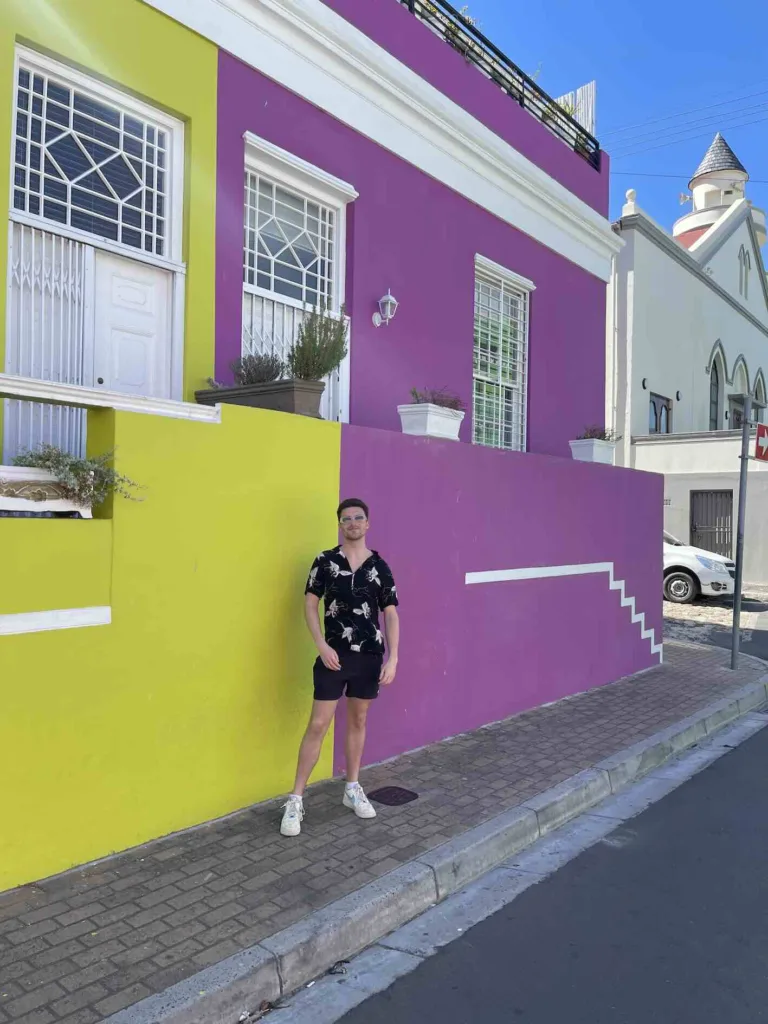
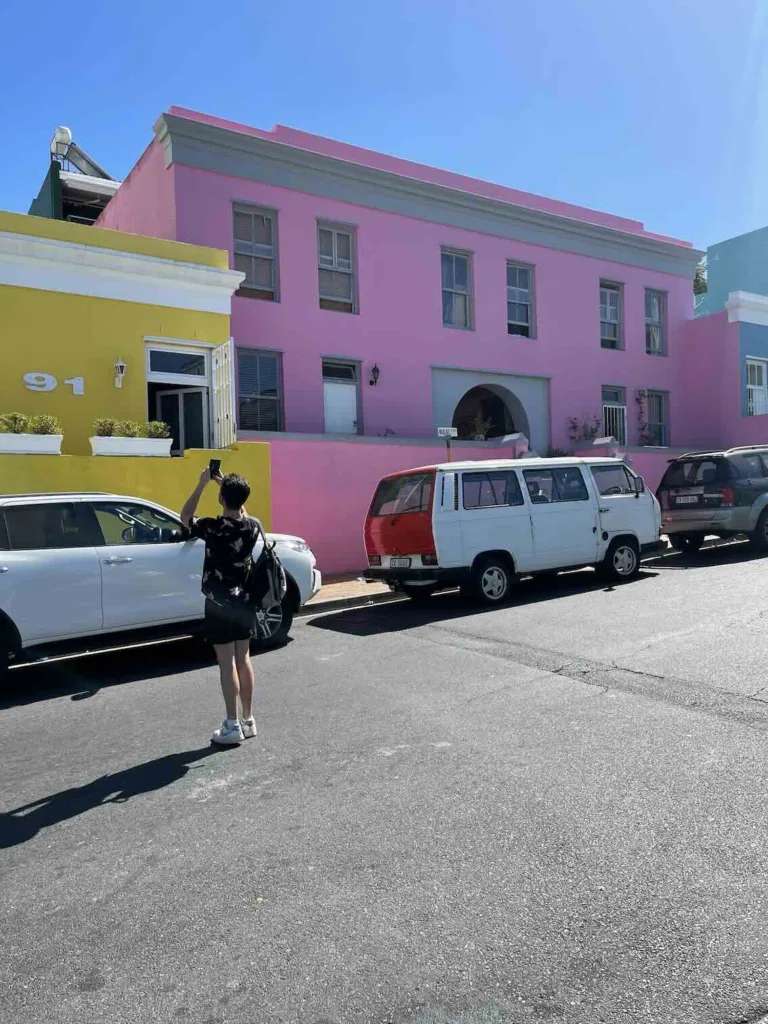
I really enjoyed the free walking tour of Bo Kaap that I took. It was run by Free Walking Tours Cape Town, and I didn’t even have to book.
We just turned up at Motherland Coffee and looked for the guides in green t-shirts. Tours run daily at 2 pm and 4:30 pm.
I had already lived in Cape Town for about a year by the time I did this tour. I already had a general idea of Bo Kaap’s history, but it was great to dive deeper into it. We were happy to leave a tip at the end!
My former housemate, Marianne, now works for Free Walking Tours Cape Town, so if she’s your guide please tell her I say hello. She’s amazing.
Local-led small group tour
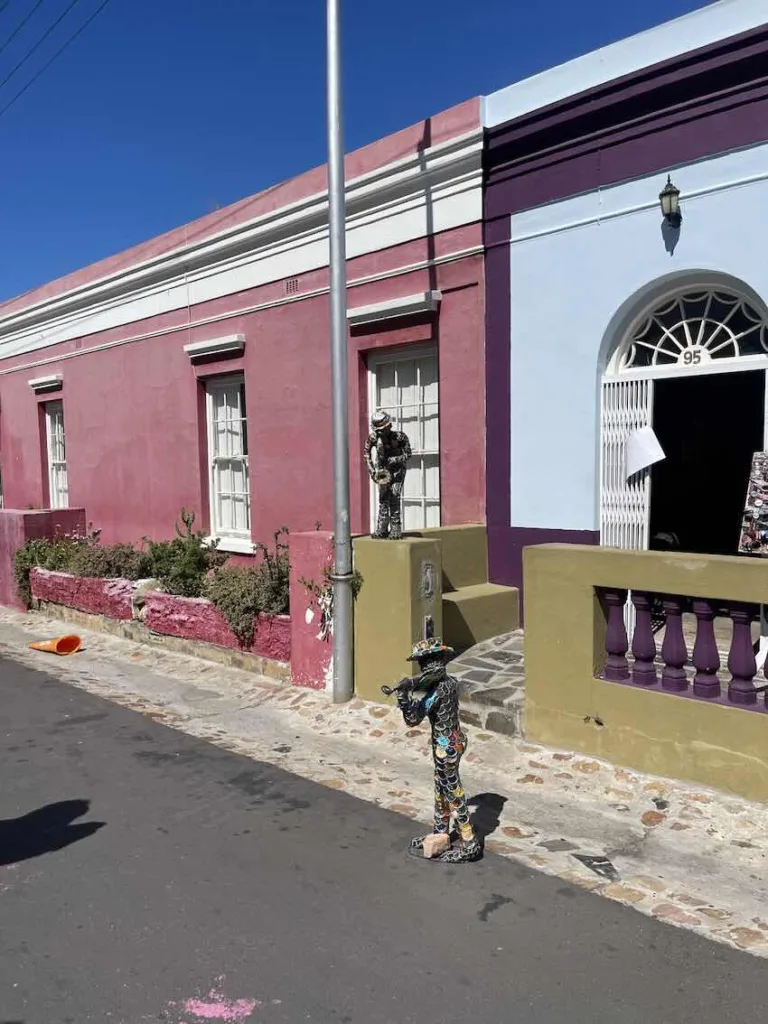
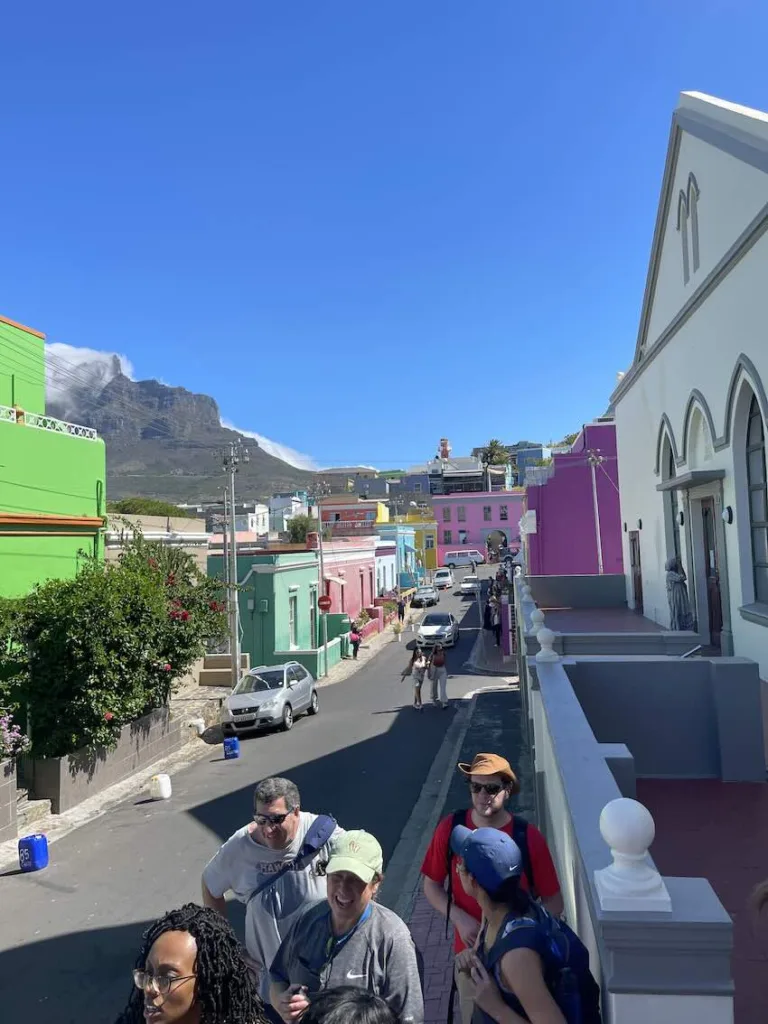
I’m all about the free walking tours, but the only downside is that the group sizes can get pretty big during the summer months. If you’d prefer a small-group experience, then I recommend booking this top-rated tour.
What sets this tour apart in my eyes is that it’s led by a Bo Kaap local, Sedick, who grew up in the area and still lives here to this day. Hearing anecdotes from his childhood is so entertaining, and he’s very insightful about Bo Kaap’s history and current socioeconomic problems.
So basically, if you’d like to support the locals and hear their stories about the area they grew up in, I can’t recommend this tour enough! It runs three times per day, everyday except Sunday, and at R350, I think it’s really reasonably priced.
You can grab your spot on this local-led tour here!
Bo Kaap Local Food Tour
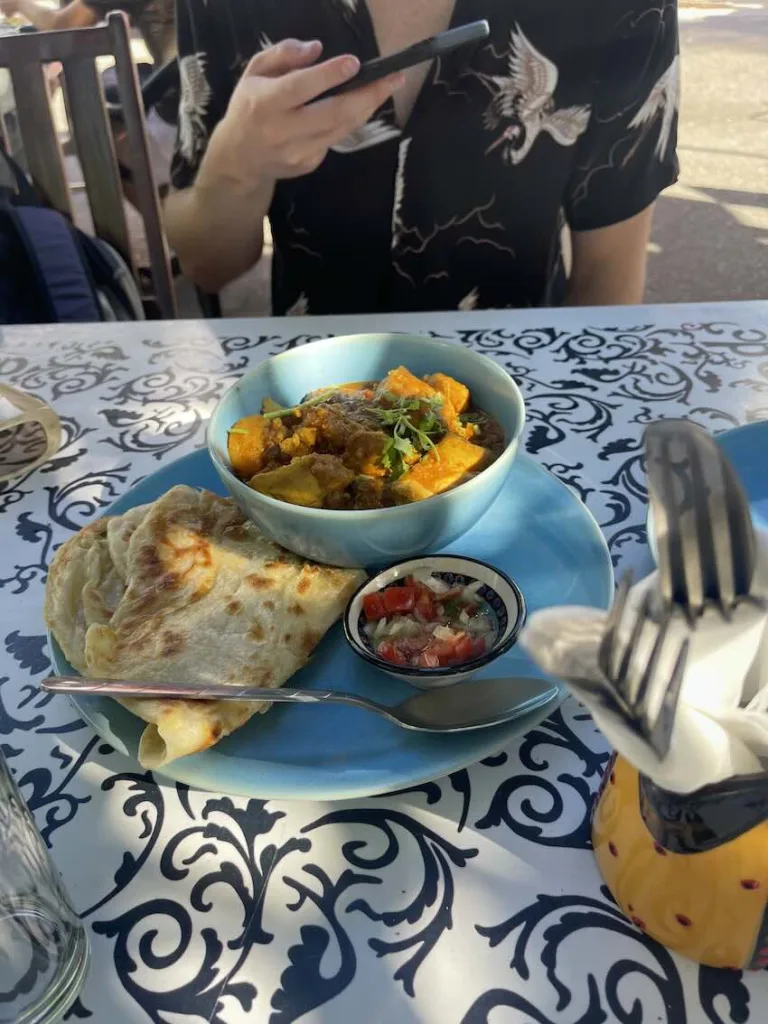

I mentioned earlier that my friend and ex-housemate, Marianne, is a guide on the free walking tours but she also often leads this Cape Town food tour!
While the food tour doesn’t focus exclusively on Bo Kaap, it visits several foodie hotspots in the area, including some of the ones I talked about above. And it has over 300 5 star reviews, so you know it’s good!
Marianne really knows her stuff (trust me, I lived with her when she was doing her guiding exams!) and the tour includes so much food, as well as beer at Marco’s African Place and a glass of wine, of course. This is South Africa, after all!


After exploring Bo Kaap, the tour continues onto De Waterkant, which is my favourite neighbourhood in Cape Town. I used to live here and it’s home to so many cute eateries, as well as pastel-coloured buildings and cobbled streets. Basically, it looks like a postcard!
I always say that the best way to get to know a place is through its stomach, and this tour is perfect for exactly that. It costs R1,985, including all food and drinks, and lasts for 4 hours, so it’s an ideal way to spend an afternoon in the Mother City.
Click here to grab your spot, with free cancellation!
Photoshoot experience
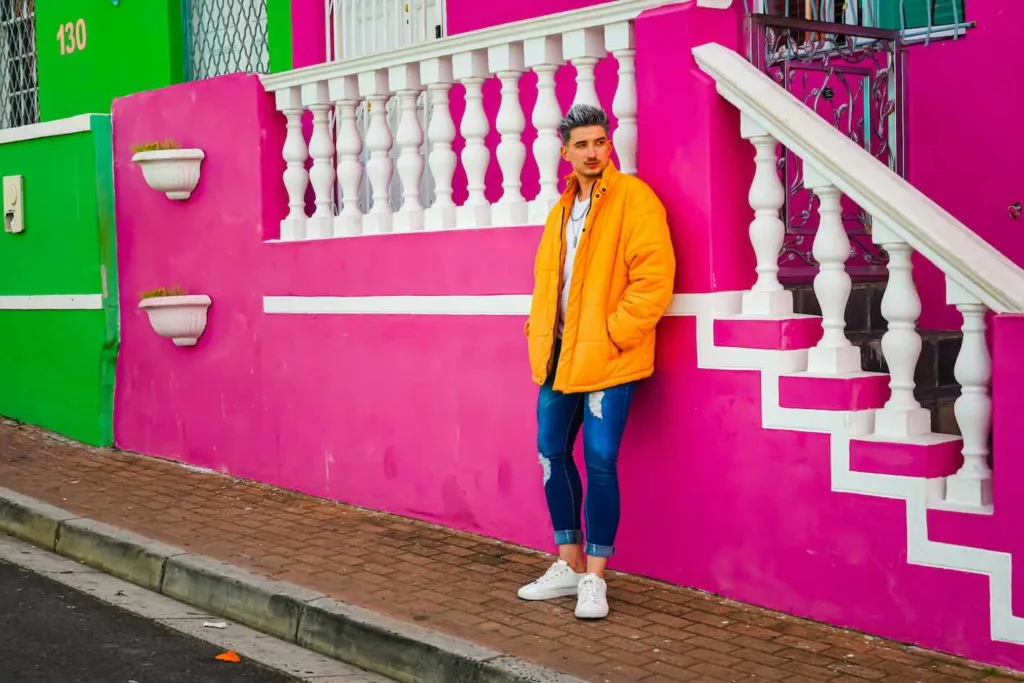
I mentioned this Bo Kaap photoshoot experience earlier, but I’m giving it the full breakdown now!
Basically, it’s an hour-long photoshoot led by South African photographers, who are passionate about Cape Town and its history. They’ll take you to the most photogenic spots and capture you in your best light, then professionally edit the photos before sending them to you a few days later.
I always feel a bit silly doing photoshoots at first, but you soon get into it, and these guys really know how to put you at ease. Then, at the end you get 35 – 50 amazing digital photos. Plus, you get a Polaroid picture to keep – and shake! (Sorry, couldn’t resist.)
The tour usually costs R1,350, and it’s an awesome way to support Cape Town creatives, while ensuring that you get some amazing photos that will fill your ex with regret.
Check reviews and grab your spot here!
Self-guided audio tour
I like audio tours and all but sometimes they feel a bit… impersonal?
Well, this one is the exception to the rule because it’s narrated by a local resident, Shereen Habib. The route covers Bo Kaap pretty comprehensively and dives deep into the area’s history. Shereen’s commentary and personal anecdotes will have you laughing, and I think it really helps you to feel connected with the area. Plus, for R105, it’s a wallet-friendly way to explore the area.
After you purchase the tour, you’ll get to download the app for free, which gives you offline access to the audio tour. It works through GPS, so it doesn’t matter if you lose signal (not that you’re likely to in Bo Kaap) or run out of data.
You can grab your audio tour here!
Is Bo Kaap safe?
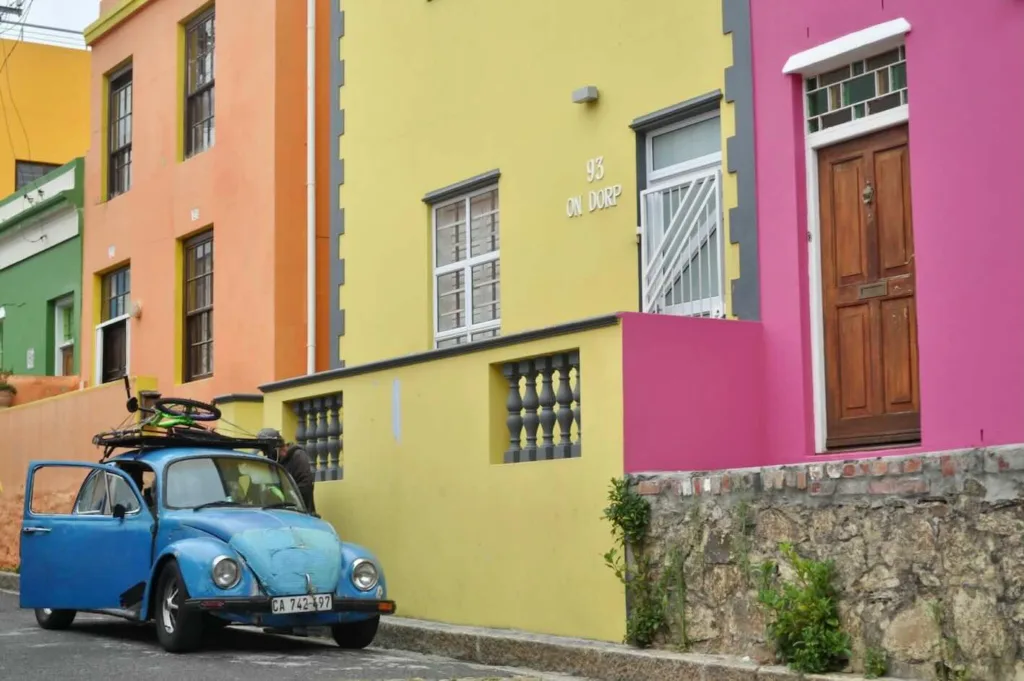
Mostly!
During the day, you should be fine walking around Bo Kaap. Just employ common sense: don’t wave your phone and wallet around, and don’t wear anything too flashy.
If you feel worried, joining a guided tour is a safe bet as there’s safety in numbers. The guides know the area very well, and big groups are less likely to be targeted by muggers.
I wouldn’t recommend walking around after dark, though. If you go to Marco’s for dinner, for example, I would recommend Ubering there and back rather than walking.
Can I stay in Bo Kaap?
Yes, you can! However, there aren’t THAT many options.
A lot of places say they’re in Bo Kaap but are actually in nearby areas like the CBD or Dewaterkant. I think Dewaterkant is amazing, but if you want to stay IN Bo Kaap itself then I think your best bet is La Rose B&B.
It’s colourful and cosy, with friendly staff, and it’s designed to be a home away from home. They do delicious, communal breakfasts every morning so this is a great way for solo travellers or couples to make friends in Cape Town!
However, I always recommend that travellers stay in De Waterkant, which is just over the road from Bo Kaap. I mean this literally – Strand Street divides the two neighbourhoods!
De Waterkant is generally quieter than Bo Kaap, and lots of streets here have security guards on patrol, which really helped me to feel safe when I lived here.
For more on where to stay in Cape Town, check out this in depth guide!
